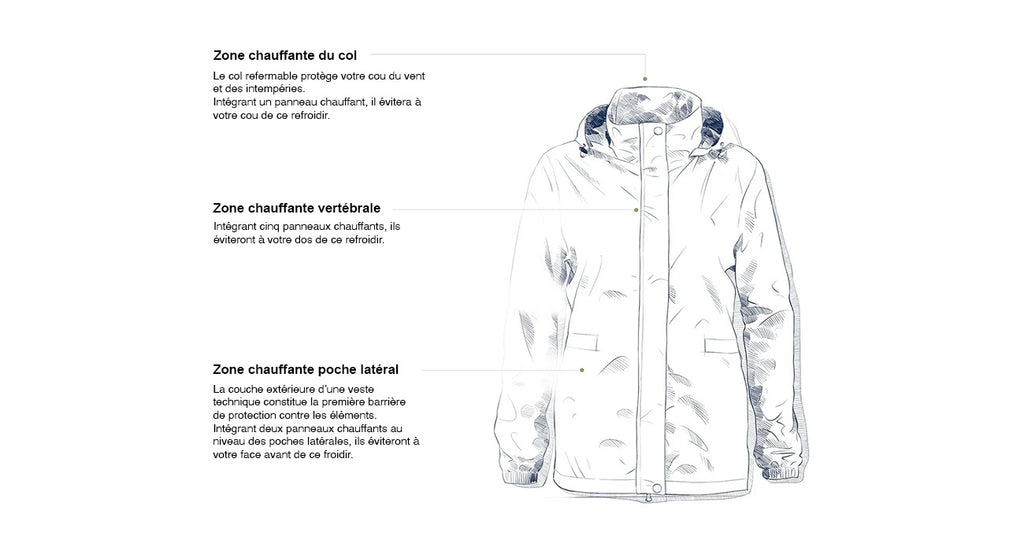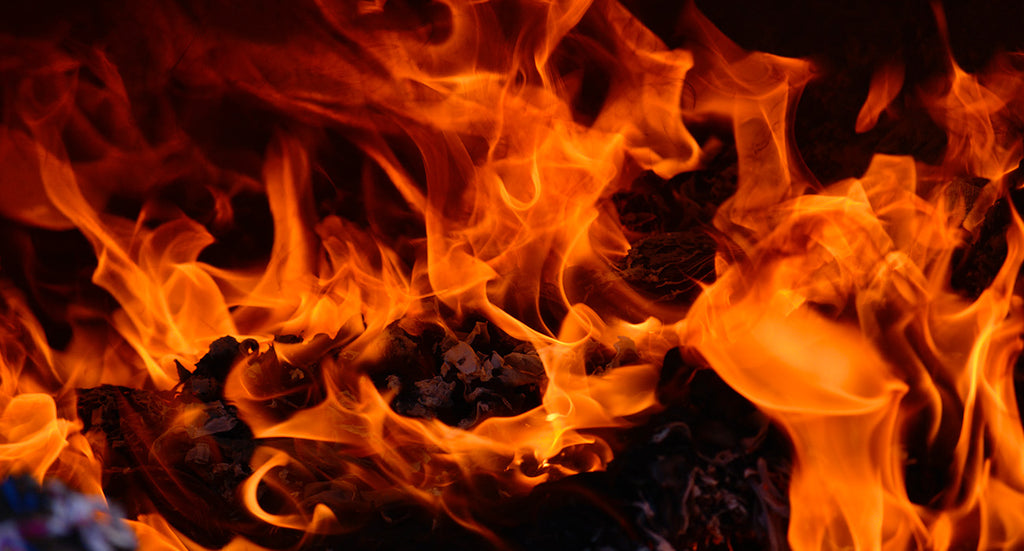
Is a Heated Jacket Dangerous?
Attracting more and more people, the technology of heated jackets, vests and down jackets is intriguing. In this article, we will first discuss how it works before trying to understand if it can be dangerous to health.
Having been part of the landscape of these winter clothes for ten years, it is diversifying and attracting more and more interest from the public. Shaking up market technologies dedicated to all-terrain athletes, this functional jacket has seen its sales increase significantly. For the very cold, athletes looking for comfort when it's cold and mountaineers wishing to conquer new heights, this smart jacket has a bright future ahead of it.
Specialized in the field of winter technical clothing, Climb Winter offers heated jackets that perfectly combine aesthetics, lightness and performance. Jewel of textile technology, our products push the limits for those who exceed them.
1. The technology allowing the jacket to heat up
The characteristics of the heating textile
 In the late 1800s, an English chemist, Joseph Swann, was studying the creation of carbon fiber from carbonized paper. His work aimed to develop filaments for incandescent bulbs.
In the late 1800s, an English chemist, Joseph Swann, was studying the creation of carbon fiber from carbonized paper. His work aimed to develop filaments for incandescent bulbs.
Being considered a heat conducting material, when carbon is heated to high temperature, it emits light. Fundamental criterion for a bulb filament, which will be strongly heated to illuminate. Unfortunately, the research carried out by Swann was put on hold and it was not until a hundred years later that it was re-addressed.
In 1960, Richard Millington improved the process of creating this same fiber by using Viscose. He thus becomes the first scientist to obtain fibers with a carbon content of 99%. Having unique mechanical properties, they will later be used to create composite materials used in different industrial sectors.
The textile industry took an interest in it a few years later, when researchers had the idea of using it to design sports equipment. Being an excellent conductor of heat, when an electric current is sent to it, it heats up by reaction. If the intensity of the current is minimal, it will emit a pleasant and gentle heat, however, the higher the intensity, the more it will heat up until it becomes luminous.
It was during the 1980s that the first heated clothing appeared. At that time they are biker gloves, which will then be joined by soles.
The coats we know will only be developed some thirty years later, after the manufacturing processes for electrically heated textiles have evolved.
2. Is a heated jacket dangerous?
2.1 Is there a risk of burns?

No, a heated jacket will not burn you .
This idea coming from the fact that a textile promulgates heat, could burn is not true.
The technology of a jacket is controlled by a button affixed to the inner or outer wall of the garment. It is this that allows the wearer of the overcoat to easily select a heat mode from the following:
- When it is White, the jacket will emit a temperature between 30-35°C;
- Blue in color, the heat will be between 35 to 40°C;
- Finally, when the color is Red, it will be between 40 and 45°C.
First on board, these temperatures seem high, however it is important to specify that they correspond to the heat emitted at the level of the heating zones of the jacket. Themselves located in the lining of the garment so as not to be in direct contact with the skin.
This means that the temperature felt will be lower. Provided for this purpose, the heat is then distributed evenly throughout the garment in order to obtain ideal comfort during winter outings. Designed for high mountain athletes as well as professionals working outdoors, the temperatures emitted are designed to be comfortable and without the risk of burning the body.
2.2 Is there a risk of the jacket catching fire?
Heated clothing is unlikely to catch fire . Composed of different heat zones designed in carbon microfiber, having a melting point of 3657°C , it is virtually impossible for a jacket to catch fire.
Having a built-in thermostat, the temperature of a heated suit is controlled by it. It is he who takes care of turning off the jacket when the temperature exceeds the temperature thresholds seen previously. This safety device is there to prevent any overheating that the jacket may encounter.
In fact, you will not risk catching fire because of your heated jacket.
2.3 Is there a risk of electrocution?

By wearing a heated jacket or other clothing, you will not be at risk of being electrocuted . Despite rain or snow, this will not happen.
The energy needed to power the electrically heated fabric comes from an external battery located inside the coat. This same portable charger offers a low voltage of 4.2 volts, lower than many children's toys. The voltage is thus too low to electrocute a human being.
Common concern, there is no risk of electrocution even when it can rain. Because the surface of the jacket is water-repellent, water cannot penetrate it, which means that the lithium-ion battery and the heating systems do not come into contact with any liquid. For greater reliability, these same heating zones are surrounded by a membrane to protect them from abrasion, shocks and water.
Then, be aware that the portable chargers sold in the European Union are subject to standards and are tested in the laboratory to avoid the risk of electrocution when submerged under water.
You will therefore not risk being electrocuted when you wear your heated jacket.
2.4 Is there a risk of high frequency radiation?
The batteries of heated equipment and clothing have a frequency of 0Hz, which implies that they are free of electromagnetic fields, or EMF .
We are coming to the end of this article, tell us in the comments if this answered your questions. If this is not the case, explain your problem to us so that we can answer it. For your next outdoor outings, do not hesitate to consult our collection of heated equipment . Designed to fight against the discomfort of the cold, you will find our latest generation gloves and insoles. Developed for adventurers looking for efficiency in all weathers, they will be part of your essentials for this winter.



Bonjour Pierre,
Le gilet chauffant est effectivement compatible avec le port d’un défibrillateur automatique.
En espérant avoir répondu à votre question.
- Climb Winter
le gilet chauffant est-il compatible avec le port d’un défibrillateur automatique
Bonjour,
Toutes nos vestes sont garanties 2 ans et leur longévité s’étend à bien plus si vous en prenez soin.
En espérant avoir répondu à votre question.
- Climb Winter
Bonjour la résitance de chauffe est garantie pendant ……